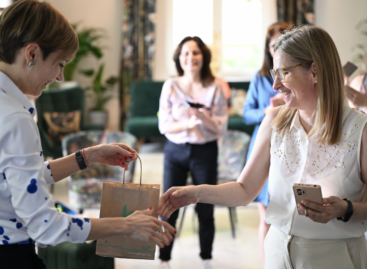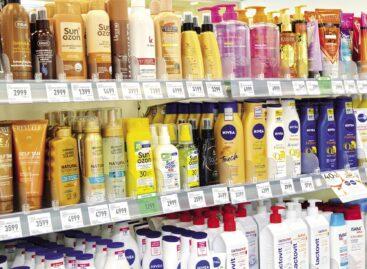Expert tips against UV radiation, misconceptions and beliefs
Pigment spots, age-related wrinkles, melanoma – three skin-related aesthetic or serious health problems for which, according to the latest scientific research, 80 percent of the sun’s ultraviolet radiation is responsible. In addition, our facial skin and the complex protective layer of our body are affected by UV radiation, which has now increased by almost 6-14 percent all year round, and alerts are becoming more and more frequent when it is not worth staying in the sun without protection. But what should we pay attention to and how can we protect ourselves professionally?

In the summer months, everyone likes to spend time outside in nature or at the water’s edge. It is important to be aware of the possible dangers of solar radiation, because excessive UV radiation is harmful both in the short and long term, so it is necessary to protect against it effectively. It is essential to wear suitable sun protective clothing and sunglasses, but these can provide little protection (depending on the material composition, it corresponds to a factor number of approximately 10) and do not cover the entire body, therefore, if we go outdoors, it is essential to use a sun protection product suitable for our skin type.
What should we pay attention to when choosing and using sunscreen products?
On the shelves of stores, you can already find countless sun protection products, from creams to spray formulas to sticks, so everyone can find the version they like. However, there are some aspects that should be taken into account before adding a product to your shopping cart. Dr. Ákos Kelen, the product development specialist pharmacist of Dr. Kelen health cosmetics, provides the following guidelines for choosing:
This is what the factor number actually shows
Contrary to misconceptions, the factor number does not show how many minutes the cream protects, but how many times the skin’s natural defenses increase with the help of the product. The individual “base” protection time is different for different skin types. In the case of the most sensitive skin, redness can appear in 5-10 minutes without protection, but with an appropriate amount of SPF 30 sunscreen, this time can ideally be extended to 5×30 minutes, i.e. two to three hours. A product with a higher factor number is recommended in spring and early summer, while the factor number can be reduced in the case of tanned skin.
Related news
The silent killer: circulatory diseases cause one-third of deaths
🎧 Hallgasd a cikket: Lejátszás Szünet Folytatás Leállítás Nyelv: Auto…
Read more >It really is about saving your skin!
🎧 Hallgasd a cikket: Lejátszás Szünet Folytatás Leállítás Nyelv: Auto…
Read more >Get in shape this spring! – expert tips for an active lifestyle
🎧 Hallgasd a cikket: Lejátszás Szünet Folytatás Leállítás Nyelv: Auto…
Read more >Related news
PENNY creates real social impact by building on long-term partnerships
🎧 Hallgasd a cikket: Lejátszás Szünet Folytatás Leállítás Nyelv: Auto…
Read more >The sled, the snow shovel and the car battery are the stars of extreme weather at eMAG
🎧 Hallgasd a cikket: Lejátszás Szünet Folytatás Leállítás Nyelv: Auto…
Read more >KSH: industrial production fell by 5.4 percent in November compared to the same period of the previous year and by 2.0 percent compared to the previous month
🎧 Hallgasd a cikket: Lejátszás Szünet Folytatás Leállítás Nyelv: Auto…
Read more >







